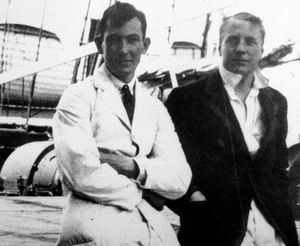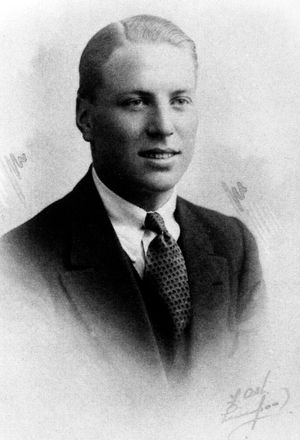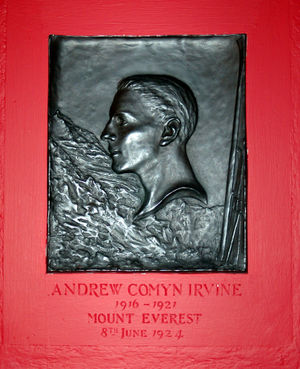Why Shrewsbury man may have climbed Everest first – new evidence revealed
One boot on Mount Everest... and, just possibly, a giant step to solving one of mountaineering's greatest mysteries.
It is this. Did explorer George Mallory and his climbing companion, former Shrewsbury School pupil Andrew "Sandy" Irvine, conquer the world's highest mountain a full 29 years before Edmund Hillary and Sherpa Tenzing reached the summit in triumph?
Mallory and Irvine disappeared somewhere high on the mountain’s north east ridge, having been sighted only a few hundred metres from the summit. In the 100 years since their ill-fated 1924 expedition there has been speculation over whether they could have made it.

Proof that they did would sensationally rewrite history. Mallory's body was discovered in 1999, but Irvine – who was carrying a camera which could provide photographic evidence that the pair conquered Everest – remained missing.
Then, in September, a National Geographic team below the north face of Everest came across an old-style climbing boot, with the foot inside, which was melting out of the ice.
One of the team, Jimmy Chin, examined the sock. It had a label stitched into it reading "A C Irvine."
The team immediately recognised the significance.
“We were all literally running in circles dropping F-bombs,” he said.
The discovery may point to Irvine's body, and perhaps the camera, being nearby.
"It certainly reduces the search area."
It was Irvine who had been carrying the Kodak Vest Pocket Camera, thought to have been on a cord around his neck. Photographic experts believe that the dry, freezing conditions may have preserved the film, meaning it could be successfully developed, revealing the answer to one of the mountain's most enduring secrets.

If it were to show the pair celebrating on the 29,032ft summit, they would take their place in history as the first conquerers of Everest, although opinions in the mountaineering community are divided on whether they would have been able to overcome the technical challenges of the last part of the ascent.
Mallory, a legend in the mountaineering community in his own time, and 22-year-old Irvine, had last been seen alive on June 8, 1924, during a third and final attempt on the summit.
Birkenhead-born Irvine was a pupil at Shrewsbury School from 1916 to 1921, where he was head of Severn Hill house.
The school has various archives associated with this illustrious Old Salopian and his story remains an inspiration to pupils to push themselves. He is commemorated in a number of ways, including a plaque in the chapel.

A keen all-round sportsman, Irvine particularly excelled at rowing and athletics. His prodigious ability as a rower made him a star of the 1919 "Peace Regatta" at Henley.
It was not until May 29, 1953, that Everest was officially conquered.
The expedition which made the first documented ascent was led by John Hunt, from the south Shropshire village of Llanfair Waterdine.
Sir John, as he became, was given much of the credit for the organisational success of that expedition which saw New Zealander Hillary and Nepalese Sherpa Tenzing Norgay reach the summit.
Whether or not Old Salopian Irvine made it to the summit 100 years ago, Shrewsbury School has a longstanding history of former pupils climbing Everest.
Sir Robert Charles Evans, an Old Salopian, was deputy leader of the 1953 expedition and made it within 300m of the summit. Dr Adam Booth was the most recent ex-pupil to conquer Everest, on May 12, 2013.





